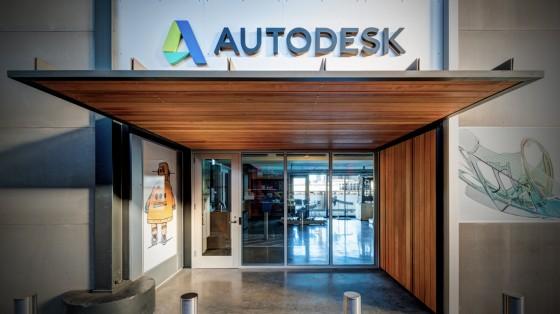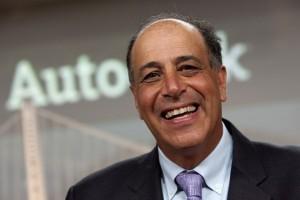 Northern California-based software developer Autodesk has announced that they are going forward with a broad restructuring plan that will see their workforce reduced by 10%. The staff reduction will result in the loss of more than 900 jobs, however Autodesk did not provide information on any specific groups within the company that would be laid off. The company has confirmed that their recent transition from software sales, licensing and bulk purchases to a more profitable and manageable cloud-based, monthly subscription business model was related to the restructuring.
Northern California-based software developer Autodesk has announced that they are going forward with a broad restructuring plan that will see their workforce reduced by 10%. The staff reduction will result in the loss of more than 900 jobs, however Autodesk did not provide information on any specific groups within the company that would be laid off. The company has confirmed that their recent transition from software sales, licensing and bulk purchases to a more profitable and manageable cloud-based, monthly subscription business model was related to the restructuring.
The staff reduction was revealed by Autodesk only a few weeks ahead of its regularly scheduled earnings conference call that is scheduled for February 25th, 2016. The company is expected to reveal their fourth quarter financial results, more specific details of their restructuring plan and more information regarding the expected consolidation of several of their leased facilities. Whether that means the complete closure of one or more of its multiple facilities, known for being lavish and well-appointed, throughout the US and Canada, or simply a reduction in leased floor space was not made clear. This move was a surprise to many in the industry, as Autodesk just came off of what seemed to be a successful year, and their stock prices have been healthy and relatively stable.
“As we progress through our business model transition, we continue to take a comprehensive look at our company to see where we can be more effective and efficient. To realize maximum value for both our customers and shareholders, and as a follow-on to previously discussed cost reduction actions, we are restructuring so we can focus resources on areas that will accelerate the move to the cloud and transition to a subscription-based business,” explained Autodesk President and CEO Carl Bass.
Autodesk believes that the layoffs of 925 employees will result in substantial cost savings in fiscal 2017 and beyond. The company intends to reinvest a portion of these savings in areas that they see as critical to its growing software platform and their new cloud-based business model. They anticipate taking pre-tax charges of $85 million to $95 million in connection with the staff reduction. Autodesk is also expecting to be close to, or exceeding, its projected subscription billings, sales revenue, non-GAAP EPS, and new subscription additions for their fourth quarter fiscal 2016.
With Autodesk’s announcement, the company joins several high-profile companies that have been reducing staff and cutting costs recently. 3D printing giant 3D Systems closed down one of its facilities and laid off a large chunk of its workforce recently, while MakerBot saw two 20% staff reductions last year, SOLS announced a 20% reduction in staff just last month, HP’s split began with layoffs. Other high-profile reductions in force have included social media superstar Twitter, which also recently cut back on staff by 8%, as well as embattled media mega-corporation Yahoo, which has also been forced to consider a sale and is cutting staff by a hefty 15%, resulting in the loss of over 1,700 jobs. Many in the industry worry that this may be a sign that there are troubled times ahead for Autodesk, but the company insists that they are simply looking to reduce costs and streamline their business with a series of resource reallocations.
“To be clear, the restructuring announced today is not related to anything we are seeing in the macroeconomic environment. We ended fiscal 2016 on a high note with very strong fourth-quarter billings growth and continued demand for our subscription offerings. Solid revenues, coupled with continued cost-controls, led to better than expected non-GAAP EPS during the quarter. I’m pleased we were able to deliver these results at such a critical moment in Autodesk’s transition,” Bass continued.
Currently Autodesk’s shares, traded on the NASDAQ, are holding steady, and have generally been slowly but steadily rising over the last few years, so it isn’t clear what is causing this move. This could simply be a company in the midst of a massive structural transformation of their business model, or it could be signs that the company will not be capable of maintaining their projected growth during the transition. While we will not know for certain until their fourth quarter results are released, it seems that this is most likely simply Autodesk taking preemptive actions to make sure that they remain a profitable and lean company during their transformation. Discuss your thoughts on these particular corporate changes in the 3D Software Designer Autodesk Downsizing forum over at 3DPB.com.
Subscribe to Our Email Newsletter
Stay up-to-date on all the latest news from the 3D printing industry and receive information and offers from third party vendors.
Print Services
Upload your 3D Models and get them printed quickly and efficiently.
You May Also Like
Making Space: Stratasys Global Director of Aerospace & Defense Conrad Smith Discusses the Space Supply Chain Council
Of all the many verticals that have been significant additive manufacturing (AM) adopters, few have been more deeply influenced by the incorporation of AM into their workflows than the space...
EOS in India: AM’s Rising Star
EOS is doubling down on India. With a growing base of aerospace startups, new government policies, and a massive engineering workforce, India is quickly becoming one of the most important...
PostProcess CEO on Why the “Dirty Little Secret” of 3D Printing Can’t Be Ignored Anymore
If you’ve ever peeked behind the scenes of a 3D printing lab, you might have caught a glimpse of the post-processing room; maybe it’s messy, maybe hidden behind a mysterious...
Stratasys & Automation Intelligence Open North American Tooling Center in Flint
Stratasys has opened the North American Stratasys Tooling Center (NASTC) in Flint, Michigan, together with automation integrator and software firm Automation Intelligence. Stratasys wants the new center to help reduce...



































